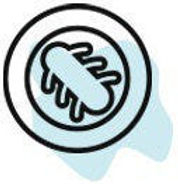Microorganisms
There are a range of microorganisms, including bacteria, protozoa, and viruses, that live and thrive in water, and can be a potential problem in drinking water.
If you get water is supplied through a municipal water company, it is typically treated to kill biological contaminants before it reaches your home.
But if you receive water through a well or other private source, it is possible for it to become contaminated with many organisms that can make you sick.
In most cases, contamination occurs when water supplies come in contact with untreated sewage, manure runoff, or other source of human or animal waste. It can be caused by leaky pipes and sewer connections, poorly sealed wells, or faulty septic systems.

